Holden VT/VX Commodore: The General’s ‘Heavy’ Hitter that KO’d Ford

The most successful Holden driver of the VT-VX Commodore era was Mark Skaife, claiming three consecutive V8 Supercar championships and two Bathurst 1000s. It was a golden era for the Holden Racing Team (HRT) under the ownership of UK-based Tom Walkinshaw Racing (TWR). Following Skaife at Oran Park in 2002 is former HRT team-mate Craig Lowndes in his AU Falcon; a combination that could provide only limited resistance to Holden’s juggernaut.
When Holden launched the all-new third generation of its Commodore sedan - the VT - in August 1997, Australia immediately warmed to the more generous proportions and improved crash safety of The General’s handsome new arrival. However, those same accolades would also present a weighty problem for race teams in creating one of the most successful Holden race cars of all time.
The VT was larger than its VS predecessor in almost every dimension, including length (+23mm), width (+48mm), wheelbase (+57mm), front track (+78mm) and rear track (+96mm). The VT also boasted a much stronger and more rigid body shell, with greatly improved occupant protection in the event of major collisions.
As a result, the all-new VT was a porker relative to the VS, with a hefty kerb weight of 1641 kg (Executive V8) compared to just 1448 kgs - a difference of 193 kg.

Craig Lowndes switched to HRT’s new VT Commodore for the last two rounds of the 1998 ATCC, wrapping up his second title in fine style at Oran Park. Here he’s leading team-mate Mark Skaife in the older VS model, which contributed most of its running gear to the VT as a running change.
As the VT was destined to replace the VS in the Ford vs Holden V8 Supercar wars in 1998, Holden and its race teams faced a major challenge in getting the new car down to the category’s 1350 kg minimum weight limit. However, where there’s a will there’s always a way, which will be revealed later in this story.
As a result, the new VT in V8 Supercar form would prove to be one of the most successful Commodore models, eclipsed only by the VE-VE II. With a total of 63 individual race wins in the Australian Touring Car Championship (aka V8 Supercar Championship Series after 1998), the VT also claimed three championships in a row.
Admittedly two of those crowns in 1998 and 1999, which were both won by Craig Lowndes, were shared with the Holden Racing Team’s older VS model in several rounds. In 2000, though, Mark Skaife began to stamp his authority on V8 Supercar racing by claiming the championship solely behind the wheel of an HRT VT.

The one that got away. After Mark Skaife put HRT’s new VT on pole position for the 1998 Bathurst 1000, he and co-driver Craig Lowndes dominated the race. They led 105 of 113 laps until Skaife suffered a high speed tyre failure entering The Chase. Lowndes suffered a similar problem late in the race. Bridgestone claimed the tyre delamination was caused by HRT running excessive camber in its suspension settings. Right or wrong, the problem did not occur again.
It was the start of a golden era for Skaife, Commodore and the factory Holden team, as they moved to the latest VX model (minor facelift but mechanically identical) and won both the 2001 and 2002 V8 championships during an unprecedented era of dominance.
Combined, the VT (63 wins) and VX (45 wins) won a staggering 108 ATCC/V8SCS races between 1998 and 2002, eclipsing the 103 race wins achieved by the VE/VE II between 2007 and 2012.
The VT-VX combination also ruled Mount Panorama with an iron fist, winning the annual Bathurst 1000 four times in a row. The 1999 and 2000 races fell to the VT, with the 2001 and 2002 races claimed by the VX.

Larry Perkins and Russell Ingall enjoyed two Bathurst 1000 victories together in VR and VS Commodores but never cracked it for a win in the VT or VX models. Their best result came in the first year they ran the VT at Mount Panorama in 1998 as seen here, finishing second despite being hampered by a down-on-power engine. Perkins said they were lucky to finish on the podium as they’d been struggling for pace all weekend.
The fact that the VT-VX Commodore duo was so successful in V8 Supercar racing is a credit not only to the car’s inherent performance attributes but also to the expertise of the teams and drivers led by HRT that pretty much wiped the floor with arch rival Ford during this era.
Apart from the EL Falcon’s 1998 Bathurst 1000 win, the four-year VT-VX era when Ford raced its AU Falcon is one that blue oval fans would prefer to forget, with a paltry eight round wins from the 52 contested during that time. And no Bathurst wins.
How Holden and its teams managed to overcome some weighty issues with the VT, to make it and the VX the multiple ATCC and Bathurst champions they became, is a credit to all involved.

In 1999 Craig Lowndes completed the inaugural Clipsal 500 at Adelaide with a perfect score, after a bruising weekend on a shortened version of the famous street circuit which had previously hosted the AGP. Here the HRT mechanics celebrate Craig’s hard-fought win as he approaches the finish line. Lowndes would suffer a fearful crash at Calder Park later that season, yet still fight back to win his third title.
The Biggest Loser
Although the VT Commodore was launched with great fanfare in August 1997, Holden’s beautifully styled new sedan did not make its track debut until almost a year later at the Calder Park round of the 1998 ATCC on June 21.
In design and construction terms it was more a case of evolution than revolution, for two main reasons. One was that the VT had to be no faster than the VS, to maintain performance parity with the EL Falcon that Ford was racing at the time. If the VT proved to be demonstrably faster it would be subjected to parity adjustments (ie slowed down) by the sport’s governing body CAMS through its notorious Performance Review Committee.
The other consideration was that to minimise costs for competitors, the new VT had to use as many of the existing VS racing components as possible. These included the 5.0 litre fuel-injected 600 bhp Chevrolet V8 engine, six-speed Holinger gearbox, multi-link coil-sprung live rear axle, MacPherson strut front suspension assemblies, fuel tank, brakes, wheels/tyres and numerous ancillary items.

The hard charging Russell Ingall, who earned the nickname ‘The Enforcer’ for his take-no-prisoners style of racing, switched to a new metallic silver Castrol livery for 1999 on his Perkins-built VT Commodore. Ingall again proved the greatest threat to HRT’s dominance that year, finishing a close runner-up to Lowndes for the second time in two seasons. Here he’s attacking the notorious Adelaide kerbs at the inaugural Clipsal 500 in 1999.
The high profile pioneers of the VT build program were Perkins Engineering and the Holden Racing Team. Both were given freedom by Holden to go their own way on key engineering decisions like roll cage design, but the issue of the VT’s inherent weight increase presented a common problem that required a united approach to solve.
As mentioned earlier, the VT V8 was almost 200 kg heavier than its VS equivalent in road going trim. However, as the construction of a new V8 Supercar in those days always started from a bare road car bodyshell, the difference in weight between the naked VT and VS shells was the critical figure.
As HRT boss Jeff Grech pointed out at the time, the VT was a much stronger and more rigid shell than the VS, but its larger size also meant more sheetmetal. And its improved crash safety meant extra internal panelling and an overall increase in sheetmetal thickness from 1.2mm to 1.6mm.

Greg Murphy, Steven Richards and Gibson Motorsport proved to be the winning combination at Bathurst in 1999, scoring a hard-fought victory in their Wynn’s-backed VT Commodore following the late race engine failure of the Paul Radisich/Steven Ellery DJR Falcon.
The bottom line was that the VT shell weighed 50 kg more than the VS shell. Although that may not sound like much, it’s the equivalent of more than two hefty bags of builder’s cement. Try finding a way to cut that amount of weight out of a car and stay within the rules!
Given that all other components would be similar in weight to the VS, Holden faced the prospect of its new VT not meeting the category’s 1350 kg minimum. With typical political pragmatism, Perkins pointed out that if the VT had to run 50 kg over the weight limit, everyone would simply stick with the lighter VS - which would not be in the category’s best interests.
After much negotiation between the interested parties, it was agreed that a number of internal panels could be removed from the standard VT bodyshell as part of its preparation for racing. These included reinforcement panels in the roof, A and B pillars and rocker (sill) panels, which when deleted allowed the VT to meet its 1350 kg weight target in full race trim.

The Holden Racing Team continued its dominance of the V8 Supercar championship in 2000, although it was now Mark Skaife doing most of the winning. Team-mate Lowndes was increasingly unhappy in the factory Holden squad, as the team now seemed more focused on Skaife. As a result Lowndes also switched, but this time to Ford and an AU Falcon run by Gibson Motor Sport in 2001.
However, it was a time-consuming and costly process for race teams to make these modifications to a standard bodyshell, so Holden’s assembly plant at Elizabeth in South Australia arranged for limited production of race-only VT shells with the extra panels being deleted as they went down the line. According to Jeff Grech, this required some ingenuity on the part of plant workers to make it happen.
“When Holden switched from VS to VT they also went to a new production line and it was all robotic,” he told Shannons Club. “The problem was that they couldn’t delete what we wanted because they couldn’t trick the robots, so their solution was to put blanking washers over the eyes of some of the robots so that they thought the panels were already in there. There were all kinds of tricks like that.
“So that got the bare shells down to the weight we needed without having to do it ourselves. Obviously, once they figured out how to build them down the line like that, they’d do a batch of say 10 or 20 which would then be farmed out to all the Holden teams as needed.”
Solving the VT’s inherent weight issue, though, was only one of several engineering obstacles which had to be overcome.

In 2000 young guns Garth Tander and Jason Bargwanna scored a popular win in the rain-affected Bathurst 1000 aboard their Garry Rogers Motorsport VT Commodore. Tander was in second place and pushing hard in the final stages, when race leader Tony Longhurst in his SBR Falcon collided with a slower car and broke his Falcon’s front suspension with 10 laps to go.
The enlarging or ‘tubbing’ of wheel housings, to allow sufficient room for the category’s mandated 17 x 11-inch racing wheels and 12-inch wide tyres, was accepted practice in V8 Supercar construction. However, on the VT Commodore, Holden also needed approval to move the front chassis rails slightly inboard to provide sufficient wheel/tyre clearance under the standard mudguards.
We should also point out here that the VT and VX were the last Commodore V8 Supercars to use the road car-related MacPherson strut front suspension, before the Falcon’s twin-wishbone design was adopted for all future racing models under the category’s ‘Project Blueprint’ initiative from 2003.
The rear section of the VT transmission tunnel was also enlarged using a sheetmetal ‘cap’ that was grafted into the floor-pan directly above the nose of the mandatory nine-inch diff, to provide enough clearance at the low suspension ride heights used in racing.
The concept of existing components being swapped from VS to VT also applied to the approved aerodynamics package, comprising a front spoiler/aero under-tray, side skirts and boot-mounted wing made from lightweight composite fibre materials.

Greg Murphy became an increasing threat in V8 Supercar racing from 2001 when the Kmart-backed team owned by the wealthy Kelly family from Mildura moved under the same TWR umbrella as HRT. Although entirely separate operations, the HRT and Kmart outfits clearly shared in Walkinshaw’s abundant technical expertise and resources. Here Murphy and co-driver Todd Kelly are on their way to third place at Bathurst in 2001 in the VX Commodore.
The VS front spoiler made the transition with minimal change. However, CAMS ruled that the proposed VT side skirts - with new underfloor extensions - formed a partial aerodynamic under-tray which had to be trimmed back to the same dimension as the VS.
The VT’s boot-mounted wing, which generated crucial rear downforce at high speeds, also required modification. The donor VS wing chord had to be narrowed slightly to avoid protruding beyond the more tapered rear quarters of the VT’s bodywork. Jeff Grech claimed that 15 percent of the wing’s effective surface area had been lost. However, the narrower VT wing also sat higher relative to the roof line than the VS, so it proved to be more efficient as airflow onto the wing surface was less disrupted.
Holden also moved away from two wing posts mounted close together in the centre of the VS boot-lid to posts mounted much further apart on the VT. A strengthening brace, which ran across the trailing edge of the boot lid between the two wing posts, was initially suspected by CAMS of providing some form of aero advantage. It was eventually approved, even though no wind tunnel testing was conducted.

The last time the Perkins/Ingall combination posed a threat at Bathurst was in the dramatic 2001 race aboard the team’s latest VX Commodore. Perkins had just taken the lead of the race and was showing ominous pace on lap 128, when he headed for pit lane under a Safety Car period and his team’s final stop. However, the Bathurst veteran misjudged his speed on the wet pit entry road and crashed, ruining any chance of victory.
A Great Car. A Great Team.
To ensure there was no ‘sandbagging’ by VT drivers in the lead-up to the all-important Bathurst 1000 in 1998, it was agreed that the new VTs from HRT and Castrol Perkins had to compete in at least the last three rounds of 1998 ATCC to be eligible for the stand-alone Bathurst 1000. And that they could only be raced by drivers in championship contention.
The latter rule was later amended as Craig Lowndes and Russell Ingall were embroiled in an intense battle for the 10-round 1998 championship; making them compete in brand new and untried cars at such a critical stage could have been prejudicial to their title hopes.
So Greg Murphy (HRT) and Larry Perkins (Castrol Perkins) gave the new VTs their competitive shakedowns at Calder (Rd.8) without incident, before Lowndes and Ingall drove VTs at Hidden Valley (Rd.9) and the Oran Park final (Rd.10) where Lowndes was crowned the 1998 champion.
Tyre problems robbed Skaife and Lowndes of what was looking like a runaway win at Bathurst for the new VT that year, but from the start of the 1999 season the VT and later VX were the undisputed kings of V8 Supercar racing during a remarkable four-year reign.

Mark Skaife was reunited with his former Nissan team-mate Jim Richards at Bathurst in 2002, which was fittingly a decade after they shared an emotion-charged victory in the Group A Nissan GT-R. It proved to be a good omen as their HRT VX Commodore survived a chronically overheating engine in the final laps to score a great victory. It was the fourth and final Bathurst win for the mighty VT-VX Commodore.
Given that the majority of that success was achieved by HRT, former team boss Jeff Grech claims that it was the result of a great car, great suppliers and a great team all peaking at the same time.
“There’s no doubt that the VT’s architecture, in terms of its longer wheelbase and wider track width, made it a nicer thing to drive and the aero was probably a bit better than the VS,” he said.
“When the category switched to a Bridgestone control tyre (in 1999) we’d already been running on Bridgestones for a long time and knew more about them than just about anyone, so to us that was an advantage. We didn’t say it at the time, but you didn’t have to be Einstein to work it out either.
“I think a lot of that success also had to do with our team. We had two top drivers in Lowndes and Skaife, we were doing all of our machining and engine development in-house by then, the brakes were getting better, we had a fantastic relationship with Bridgestone of course and we also went to Penske dampers (shocks) which was another huge gain.
“When you add up all of those things that came on stream at the same time we were racing the VT (VX), it might help explain why those cars were so good. It was a fun time and I really enjoyed it.”

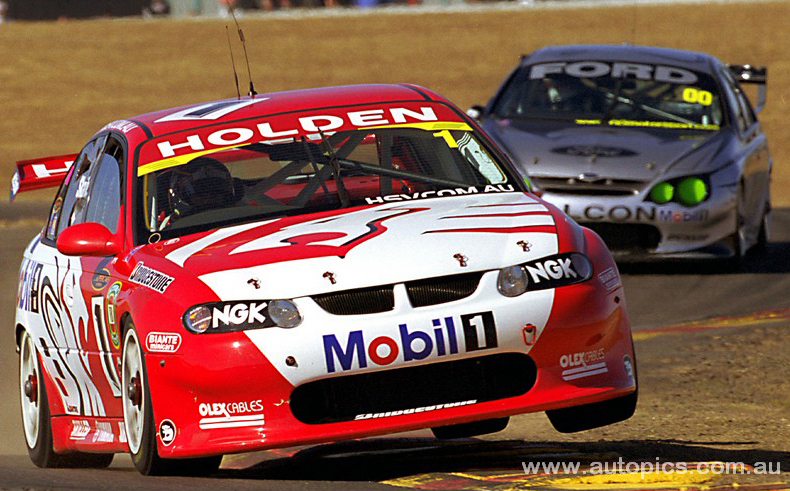


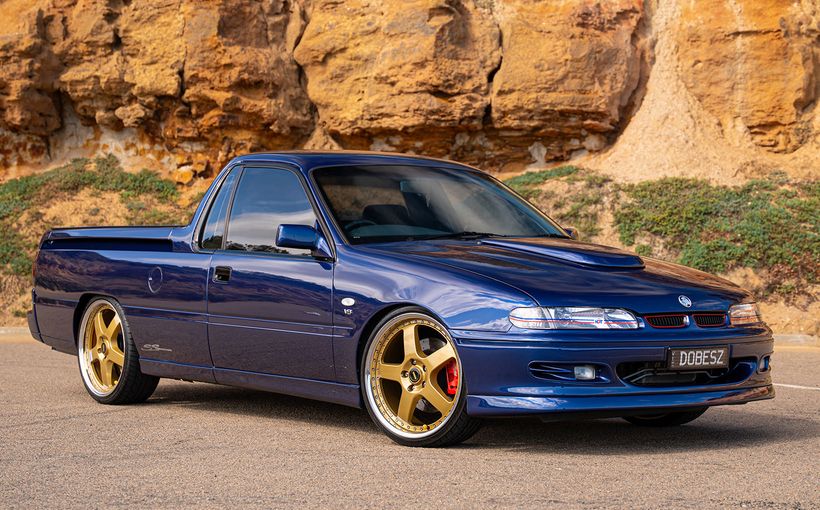
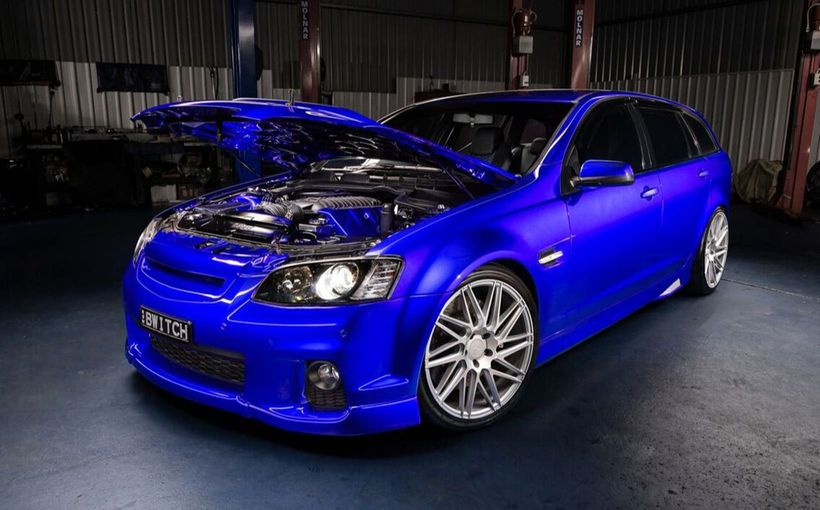
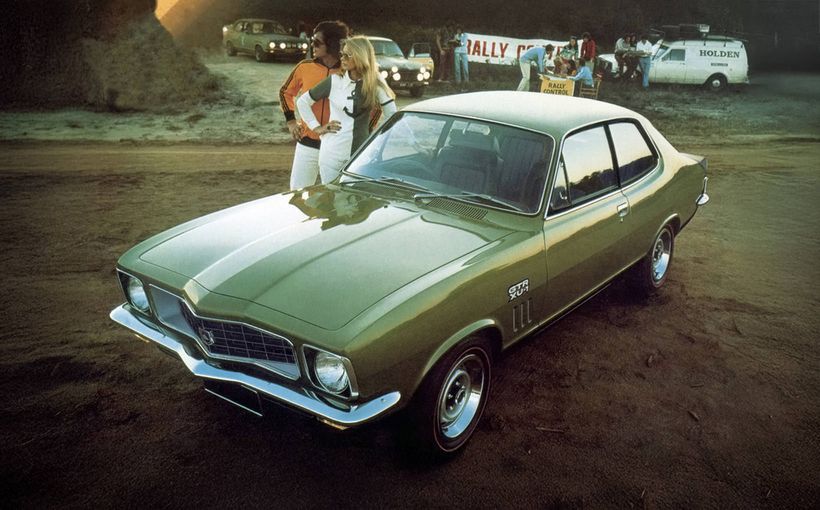
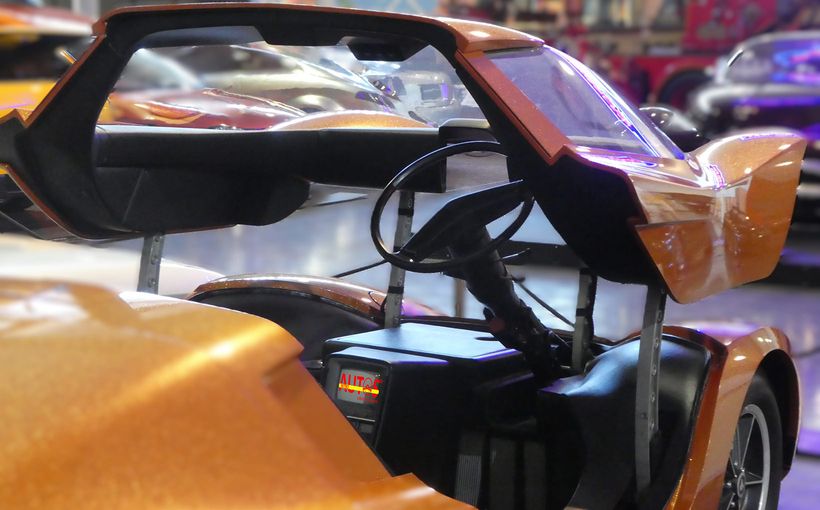
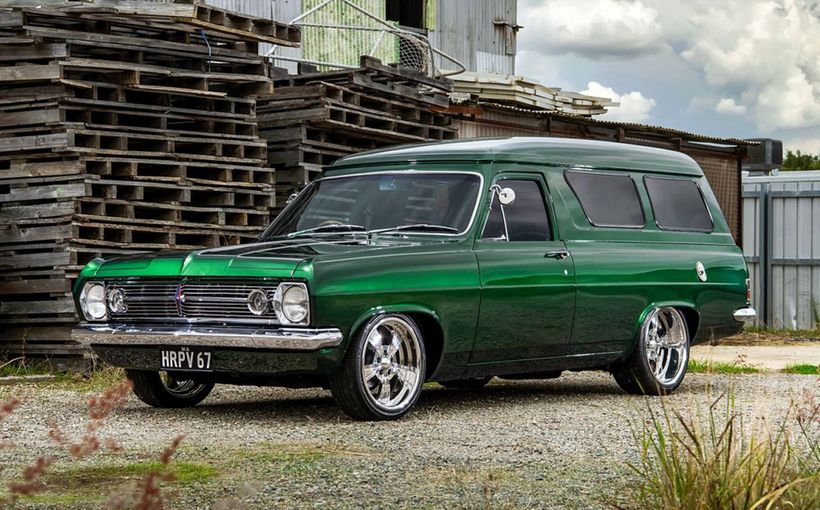

Comments
carnut_73
I may be American (United States) by birth and residence, but I still have an admiration and respect for Australia and New Zealand. And hopefully, I'll be able to fly down there before I die.
Blinkie1
Agree with what your saying there carnut_73.
carnut_73
I don't generally use the word "Jap" to describe the Japanese. Contrary to what it sounds like, I have no dislike against the Japanese people.
carnut_73
I call it a damn shame that Holden is no longer producing cars in Australia. Competition from other car companies and countries can be a good thing, what's not a good thing is when you sit back and do nothing to improve your product while the competition continues to improve on the product, leaving you with the same basic product you had back in 1971. You may change the appearance of a car, but the mechanics of the car hasn't improved. While the Japs do the same basic thing, only better.
carnut_73
G'day Fletch. Another awesome show! It looks like a ripper event. Quite a collection of Holdens and GM vehicles. :)
Blinkie1
Leave that Jacket out of it, next you be laying claim there PonyRider!
PonyRider
Hey Fletch, a very cool episode, thank you again.
I might be a Ford man but I'm also an unbiased Aussie,
and there were some sweet Holden rides at Taranaki Holden Club's display.
.
I saw 'your' Test Pattern jacket Blinkie, (couldn't miss it)
I doubt that Fletch would part with it now though mate ! (lol)
.
Fletch, was that your car in the closing scene ?
.
Seriously, the Kiwi's passion for classic cars never fails to amaze me.
Blinkie1
Fletch you thief! now I know who's got and been wearing my blazer then, way cool!!! That was one awesome show there Fletch mate. We must of just missed each other bro did see you but not close enough to speak. I think you must just about be a Naki boy buy now though mate. That FB was real nice though so were the rest of them on display both inside and outside.
Cheers and thanks mate once again.
Blinkie1